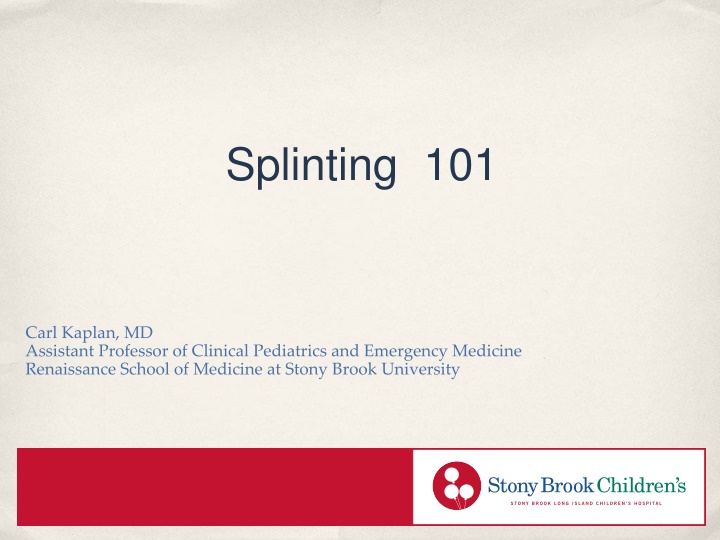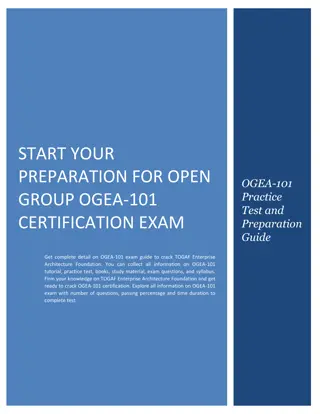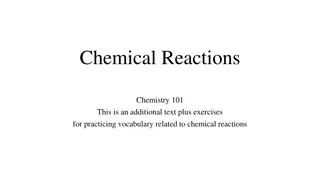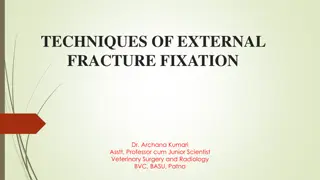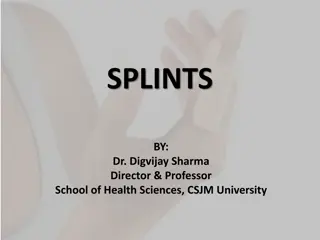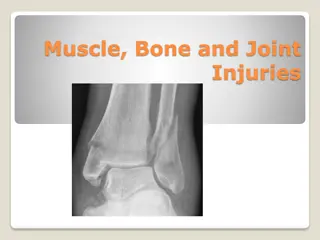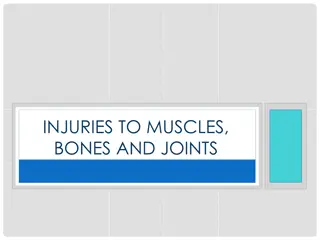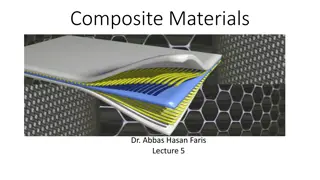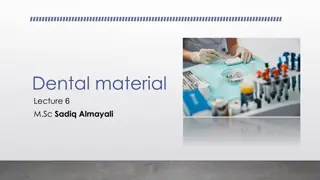Splinting 101: Basic Principles, Materials, and Types of Splints
Learn the fundamental principles of splinting from Assistant Professor Dr. Carl Kaplan, covering indications, materials needed, and various types of splints such as short arm, volar, radial gutter, ulnar gutter, and thumb spica. Discover when to use each type for different orthopedic injuries and fractures, ensuring proper immobilization and aftercare to promote healing.
Download Presentation

Please find below an Image/Link to download the presentation.
The content on the website is provided AS IS for your information and personal use only. It may not be sold, licensed, or shared on other websites without obtaining consent from the author.If you encounter any issues during the download, it is possible that the publisher has removed the file from their server.
You are allowed to download the files provided on this website for personal or commercial use, subject to the condition that they are used lawfully. All files are the property of their respective owners.
The content on the website is provided AS IS for your information and personal use only. It may not be sold, licensed, or shared on other websites without obtaining consent from the author.
E N D
Presentation Transcript
Splinting 101 Carl Kaplan, MD Assistant Professor of Clinical Pediatrics and Emergency Medicine Renaissance School of Medicine at Stony Brook University
Overview Basic principles Materials Types of splints Aftercare
Basic Principles Indications Immobilization of acute orthopedic fractures or dislocations Immobilization of ligamentous or tendinous injuries Immobilization of wounds near mobile joints
Basic Principles Joint proximal/Joint distal immobilization Avoid compartment syndrome Avoid pressure necrosis Properly address underlying wounds
Materials Shears Cast padding (Webril) Cloth tape Splinting material Water (as needed for activation of certain materials) Fiberglass, Plaster, Aluminum/Foam, etc... Elastic wrap (ACE, Coban) Assistance
Short Arm Splints Hand - Position of function (neutral position) 25-30 degrees wrist extension 60-90 degrees MCP flexion 10-30 degrees PIP flexion 5-15 degrees DIP flexion
Volar Splint Indications Single forearm bone buckle (torus) fracture Multiple Metacarpal fractures Wrist Sprain
Radial Gutter Splint Indications 2nd or 3rd Metacarparpal fractures or dislocations Significant 2nd or 3rd Proximal phalanx fractures Known or suspected tendon injuries of 2nd or 3rd digits
Ulnar gutter splint Indications 4th or 5th Metacarparpal fractures or dislocations Significant 4th or 5th Proximal phalanx fractures Known or suspected tendon injuries of 4th or 5th digits
Thumb Spica splint Indications Thumb fractures or dislocations Thumb sprains or tendon injuries Suspected scaphoid (navicular) fractures
Finger splints Buddy Taping or Aluminum/Foam Indications Phalangeal fractures PIP or DIP dislocations Sprains Tendon injuries (Aluminum/Foam only)
Long Arm splints Sugar Tong (ST) or Posterior (P) Indications Radius or Ulna fractures of forearm (ST) Dislocations at wrist (ST) or elbow (P) Distal humerus fractures (P)
Short leg splints Indications Select distal Tibia and Fibula fractures High grade ankle sprains Achilles tendon injuries Mid-foot or metatarsal fractures
Posterior Long Leg splint Indications Tibia or Fibula fractures or dislocations Patella fracture, dislocation, or tendon injuries Distal Femur fractures
Aftercare Rest, Ice, Elevation (2-3 days) Loosen splint if paresthesias or digital color changes develop Analgesia Crutches or Slings as indicated Do not get wet Arrange follow up
Documentation (Fracture/ Dislocation Procedure *ED)
